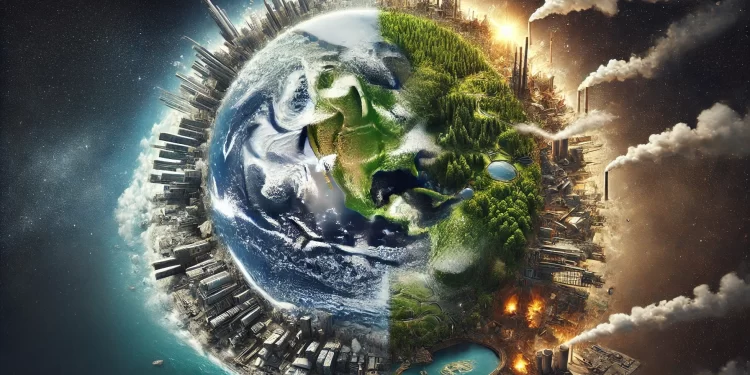In recent decades, scientists have increasingly recognized the immense impact humans have on Earth’s environment. Now, a groundbreaking study suggests that these changes are so profound that they mark the beginning of a new geological epoch, the Anthropocene—a time in which human activities have permanently altered the planet’s natural systems. Researchers argue that this shift began in the mid-20th century and will shape Earth’s future for millennia.
The Challenge of Defining the Anthropocene
Determining when exactly this epoch began is no easy task. Human influence on the planet has varied greatly over time and across different regions. For example, about 12,000 years ago, humans began practicing agriculture, transforming vast landscapes. Some research points to even earlier dates—such as 8,000 years ago with the rise of early agricultural societies or 6,500 to 5,000 years ago when irrigated rice cultivation developed. The Industrial Revolution also played a major role in reshaping the Earth, introducing significant environmental shifts, particularly in atmospheric carbon dioxide and methane levels.
Yet, these transformative events occurred in distinct locations and spread at different rates, making it difficult to identify a single moment when human activities began dominating the Earth’s natural systems. This complexity has made it challenging for scientists to settle on an official starting point for the Anthropocene.
The Search for a Defining Moment
This difficulty in pinpointing a start date is one reason why the Anthropocene Working Group (AWG) decided in March not to formally recognize the Anthropocene as a distinct geological epoch—at least, not yet. One major sticking point is the absence of clear stratigraphic markers, or identifiable layers in Earth’s rock record, that indicate when human activities began having a profound, irreversible impact on the planet.
To tackle this challenge, Michinobu Kuwae from the Center for Marine Environmental Studies at Ehime University, along with colleagues, conducted a comprehensive study of 137 global sites, analyzing anthropogenic impacts over the past 7,700 years. Their analysis yielded three potential time frames that could signal the onset of the Anthropocene.
Three Key Time Periods
The first candidate period spans from 1855 to 1890, a time that coincides with significant industrial advancements. During this era, there was a notable rise in lead concentrations and disturbances in lake nutrient balances, alongside shifts in stable isotope ratios.
The second period, from 1909 to 1944, witnessed further environmental disruptions, such as changes in pollen compositions and rising levels of black carbon—an element that contributes heavily to climate change. The period also saw widespread shifts in stable isotopes, suggesting deep ecological changes.
The final candidate period, between 1948 and 1953, stands out as a time of accelerated human impact. This was the era when organic pollutants and microplastics first appeared, alongside the onset of the nuclear age, which left a lasting impression in Earth’s geological record with the introduction of plutonium and carbon-14 from nuclear detonations.
The 1950s: The Start of the Anthropocene?
Kuwae and his team concluded that the period from 1948 to 1953 represents the clearest global increase in human impact on Earth’s systems. According to Kuwae, “The unprecedented rise in anthropogenic signatures in geological layers around 1952 occurred simultaneously across Europe, North America, East Asia, Oceania, Antarctica, the Arctic, and beyond, signifying a global spread of human influence at that time.”
This conclusion has far-reaching implications for how we understand humanity’s role in shaping the planet. “Recognizing that the Anthropocene likely began around 1952 offers a new perspective on our place in Earth’s history. It shifts how we view time in relation to human activity and the planet’s evolution,” Kuwae explained.
Why This Matters Now
Establishing a definitive geological boundary for the Anthropocene is critical for understanding the full extent of human influence on the Earth. Kuwae emphasizes that identifying this boundary, which appears around 1952, is key to resolving debates about earlier human impacts during the Holocene epoch.
Moreover, this study underscores the urgent need to address the environmental consequences of our actions. “It has never been more vital to change how the public perceives the relationship between humans and the planet. Recognizing that we live in the Anthropocene could catalyze a much-needed shift in this perspective,” Kuwae urged.
As the generation living in this transformative era, we bear the responsibility to prevent irreversible damage to our world. Kuwae’s findings highlight the necessity of acknowledging that we are indeed in the Anthropocene—and that understanding this epoch can drive public awareness and inspire meaningful environmental action.











